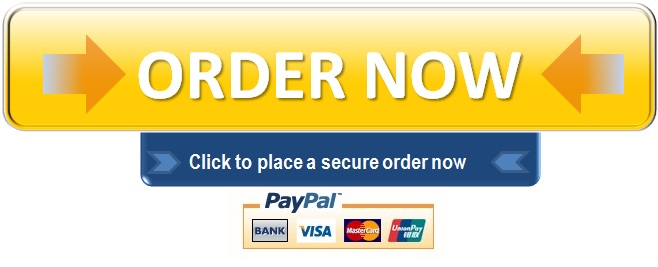FIND A SOLUTION AT Academic Writers Bay
PJM 440 X Bar and R Charts Based on Sample Bolts Discussion
PJM440 MOD5 Discussion Post, Peer responses.Please reply to both POST1: and POST2: in at least 250 words. I have included …
PJM 440 X Bar and R Charts Based on Sample Bolts Discussion
PJM440 MOD5 Discussion Post, Peer responses.Please reply to both POST1: and POST2: in at least 250 words. I have included the original post and references to help out with your responses.RequiredChapters 17 & 18 in Quality Management for Organizational Excellence: Introduction to Total QualitySnee, R. D., & Hoerl, R. W. (2018). The future of quality. The Journal of Quality and Participation, 40(4), 11-17. Slides 188-226 in the PowerPoint supplement to Quality Management for Organizational Excellence: Introduction to Total QualityRecommendedBazrkar, A., Iranzadeh, S., & Feghhi Farahmand, N. (2017). Total quality model for aligning organization strategy, improving performance, and improving customer satisfaction by using an approach based on combination of balanced scorecard and lean six sigma. Cogent Business & Management, 4(1), 1-16.Singh, J., Singh, H., Pandher, R. P. S. (2017). Role of DMAIC approach in manufacturing unit: A case study. IUP Journal of Operations Management, 16(4), 52-67.ReferencesAmerican Society for Quality (ASQ). (2018a). What is quality function deployment (QFD)? Retrieved from http://asq.org/learn-about-quality/qfd-quality-fun… American Society for Quality (ASQ). (2018b). Seven new management and planning tools. Retrieved from http://asq.org/learn-about-quality/new-management-… Goetsch, D. L., & Davis, S. D. (2016). Quality management for organizational excellence: Introduction to total quality (8th ed.). Upper Saddle River, NJ: Pearson Education, Inc.Tague, N. (2004). The quality toolbox (2nd ed.). Milwaukee, WI: ASQ Quality Press.Original Post:A manufacturer produces bolts for commercial use, and tests the quality of production by choosing a sample of 5 bolts every 2 hours from production. Because of variation, not all bolts have the same length. Shown below are 8 samples. Use the information below to construct an x bar chart, and R chart, and determine if the process is capable and in control.Sample 1: 8.01, 7.99, 7.99. 8.00, 7.98Sample 2: 8.03, 7.96, 8.01, 8.02, 7.97Sample 3: 7.96, 7.97, 7.96, 7.99, 8.01Sample 4: 8.00, 8.01, 7.97, 8.01, 7.99Sample 5: 8.02, 8.03, 7.99, 8.01, 8.02Sample 6: 8.02, 8.01, 7.97, 8.00, 8.01Sample 7: 8.03, 8.04, 8.03, 8.00, 7.99Sample 8: 7.96, 7.99, 8.02, 8.01, 7.98Prepare your charts using any tool you wish, i.e., PowerPoint, MS Word, Excel, or free tools such as Apache OpenOffice and portable and installable versions of LibreOffice. Save your document as a pdf file for uploading to your discussion area. Answer the following questions:Is the process capable and in control?Why do we need both an x bar and R chart?When a process is in control, is it producing acceptable levels of quality?POST1:Quality control charts are a tool used to monitor if a process is under statistical control. The charts help to visualize differences and allow for problems to be addressed quickly. X-bar and R-chart are a type of control chart used to measure the variation between samples taken at a given time. The control limits within each chart are used to monitor the difference in mean for the future. For example, if a point is outside of the control limits, the mean or variation of the process is considered out of control (Goetsch & Davis, 2014).On an X-bar chart, the y-axis depicts the control limits and overall mean, but the x-axis shows the sample group. X-Bar charts provide useful information such as sample size, control limits, standard deviation, overall mean, and the points beyond control. However, on the R-chart, the y-axis depicts the range, overall mean, and control limits (Goetsch & Davis, 2014).According to the X-Bar chart and R-Chart, all of the samples are in the valid range of control. Both X-Bar and R-Charts are needed because the X-bar chart shows how the average changes over time and the R-chart shows how the range of the samples change over time. When a process is in control, it does not necessarily mean that the process is producing acceptable levels of quality. This means that the process is producing minimal levels of variation. Also, in terms of quality, there is a difference between customer satisfaction and quality.ReferencesGoetsch, D. L., & Davis, S. (2014). Quality management for organizational excellence : introduction to total quality. Pearson.POST2:When charting data that has more than two samples of data, you want to consider using x-charts and R-charts. In the sample data given and graphed (see ), here are the results.Is the process capable and in control?By graphing the sample data set, you can see that there is very little variation in the length of the bolts every 2 hours when tested. To prove that the production quality is to standard, the Upper Control Limit and Lower Control Limit (UCL & LCL) are set. UCL is set at 44.63442 and the LCL is a negative number, which essentially means the LCL will be set at zero. When you look at the data within these lines on the graph, you will see that the data is capable, and quality is well within control.Why do we need both an x bar and R chart?An x-chart is used to show the mean (average) of samples over time and an R-chart is used to show the variation, or range, in each sample over time (Goetsch & Davis, 2014).When a process is in control, is it producing acceptable levels of quality?Yes, it is. The UCL and LCL are set to be the guiderails in a graphed process for quality. Any data point going outside of these limits creates instability in a process and is a great indicator to the leaders of a project that there is an issue to address to ensure consistent quality.Reference:Goetsch, D. L., & Davis, S. (2014). Quality management for organizational excellence: introduction to total quality. Pearson.
LOG 435 Grantham University Process and Order Fulfillment Questions Paper
Process and Order Fulfillment In 4-5 pages, list and discuss:What is cost-of-service pricing? What is the relationship b …
LOG 435 Grantham University Process and Order Fulfillment Questions Paper
Process and Order Fulfillment In 4-5 pages, list and discuss:What is cost-of-service pricing? What is the relationship between value-of-service pricing and cost-of-service pricing?What is a released value rate and how does its use affect a shipper’s transportation costs?What are the major forces that affect carrier pricing strategies?How might pricing strategies differ among carriers in competitive markets, oligopolistic markets, and monopolistic markets?Why were tariffs created? Are they still useful in today’s transportation environment?The requirements below must be met for your paper to be accepted and graded:Write between 750 – 1,250 words (approximately 3 – 5 pages) using Microsoft Word in APA style, see example below.Use font size 12 and 1” margins.Include cover page and reference page.At least 80% of your paper must be original content/writing.No more than 20% of your content/information may come from references.Use at least three references from outside the course material, one reference must be from EBSCOhost. Text book, lectures, and other materials in the course may be used, but are not counted toward the three reference requirement.Cite all reference material (data, dates, graphs, quotes, paraphrased words, values, etc.) in the paper and list on a reference page in APA style.References must come from sources such as, scholarly journals found in EBSCOhost, CNN, online newspapers such as, The Wall Street Journal, government websites, etc. Sources such as, Wikis, Yahoo Answers, eHow, blogs, etc. are not acceptable for academic writing. LECTURE:OverviewSpending on freight transportation in the United State exceeds $750 billion annually, accounting for more than 62% of the nation’s logistics costs. Globally, more than $1 trillion is spent moving goods. Given these vast expenditures on transportation services, they have a significant impact on supply chain success. Transportation buyers must understand the costs of moving goods and the basis by which transportation service providers establish prices.Analyzing these costs and prices is a dynamic, complex effort. For every combination of origin, destination, product, and service requirements, the financial details change. Organizations supply chain logistics leaders must understand the costs related to their specific shipments and negotiate effective prices that allow their products to compete in the marketplace. In contrast, the transportation company wants to be properly compensated for its services. The supply chain logistics leadership in an organization must be astute and work with their team to figure out ow to achieve a balance between these seemingly incongruent goals.Many carrier pricing decisions are based on some reaction to a stimulus from the business environment. In transportation, the environment comprises many constituencies, four of which include customers (market), government, other channel members, and competition (Rodrigue, 2015).Price SettingA profit-maximizing-oriented carrier will not set a price in the long run that prohibits the movement of freight or passengers. The carrier’s price will be set at the level that maximizes its return. This, however, is dependent on what the market perceives to be a reasonable price and/or what the market is forced to pay (in monopolistic situations). The concept of price elasticity also plays an important role in the market’s impact on carrier prices. For example, business travelers might be willing to absorb increases in air fares in exchange for the convenience of short-notice reservations, whereas leisure travelers might not. Customers then have a formidable impact on carrier prices. Transportation had been economically regulated by the federal government for well over 100 years because of potentially monopolistic abuses. Part of this regulation dealt with carrier prices in the forms of how they are constructed and how they are quoted. In some respects, these government agencies help mitigate the imperfections in the marketplace to control carrier pricing. As such, governmental controls affect how carriers price their services (Notteboom, 2015).Competition and Price SettingIn the case of carriers, other channel members can include other carriers in the same mode and in different modes. For example, interline movements between different carriers that involve revenue splits will certainly impact how each carrier prices its services. If one carrier decides to raise its price, the other carrier either has to reduce its price or risk losing business, given that the market has a high price elasticity. Competitors will impact carrier-pricing strategies. History has shown that even in transportation oligopolies (such as airlines and LTL motor carriers), price leaders that offer discounts to customers will find that competitors will match those discounts, even at the risk of reducing industry profits. This could be a symptom of the continual pressure on carrier customers to reduce transportation costs in their firms. Across-the-hoard price increases are also usually matched by all the major competitors in a particular mode. However, occasions do occur when competitors do not follow price leader actions. Carriers then must respond to changes and directions from their operating environment. Sometimes these changes might not favor the carriers, such as when government regulations force carriers to make a change that reduces efficiency. However, these environmental forces do exert pressure on carrier-pricing strategies and price levels (Notteboom, 2015).Budgeting Transportation CostsIt is common for transport costs to account for 10% of the total cost of a product. This share also roughly applies to personal mobility where households spend about 10% of their income for transportation. The choice of a transportation mode to route people and freight within origins and destinations becomes important and depends on a number of factors such as the nature of the goods, the available infrastructures, origins and destinations, technology, and particularly their respective distances.Transport costs are a monetary measure of what the transport provider must pay to produce transportation services. They come as fixed (infrastructure) and variable (operating) costs, depending on a variety of conditions related to geography, infrastructure, administrative barriers, energy, and on how passengers and freight are carried. Three major components, related to transactions, shipments and the friction of distance, impact on transport costs (Rodrigue, 2015).Transport costs have significant impacts on the structure of economic activities as well as on international trade. Empirical evidence underlines that raising transport costs by 10% reduces trade volumes by more than 20% and that the general quality of transport infrastructure can account for half of the variation in transport costs. In a competitive environment where transportation is a service that can be bidded on, transport costs are influenced by the respective rates of transport companies, the portion of the transport costs charged to users.Transportation offers a spectrum of costs and level of services, which results in substantial differences across the world. The price of a transport service does not only include the direct out-of-the-pocket money costs to the user but also includes time costs and costs related to possible inefficiencies, discomfort and risk (e.g. unexpected delays). However, economic actors often base their choice of a transport mode or route on only part of the total transport price.Among the most significant conditions affecting transport costs and thus transport rates are: Geography; Type of product; Economies of scale; Energy; Trade Imbalances; Infrastructures; Mode; Competition and regulation; and Surcharges (Notteboom, 2015).ReferencesAccenture (2015). Understanding Transportation Costing and Pricing. Accenture Academy. Retrieved from https://www.accentureacademy.com/d/course/10000066…Coyle, John J., Novack, Robert A., Gibson, Brian J. (2016). Transportation: A Supply Chain Perspective (8th Ed.). Boston, MA: Cengage Learning.Hicks, R. (2013). An Exploration of Healthcare Inventory and Lean Management in Minimizing Medical Supply Waste in Healthcare Organizations. Ann Arbor, MI: ProQuestNotteboom, T., Rodrigue, J. (2015). Risks in Global Supply Chains. The Geography of Transport Systems. Retrieved from https://people.hofstra.edu/GEOTRANS/eng/ch9en/conc9en/supply_chain_risks.html
- WE OFFER THE BEST CUSTOM PAPER WRITING SERVICES. WE HAVE DONE THIS QUESTION BEFORE, WE CAN ALSO DO IT FOR YOU.
- Assignment status: Already Solved By Our Experts
- (USA, AUS, UK & CA PhD. Writers)
- CLICK HERE TO GET A PROFESSIONAL WRITER TO WORK ON THIS PAPER AND OTHER SIMILAR PAPERS, GET A NON PLAGIARIZED PAPER FROM OUR EXPERTS
QUALITY: 100% ORIGINAL PAPER – NO PLAGIARISM – CUSTOM PAPER
Why Choose Us?
- 100% non-plagiarized Papers
- 24/7 /365 Service Available
- Affordable Prices
- Any Paper, Urgency, and Subject
- Will complete your papers in 6 hours
- On-time Delivery
- Money-back and Privacy guarantees
- Unlimited Amendments upon request
- Satisfaction guarantee
How It Works
- Click on the “Place Your Order” tab at the top menu or “Order Now” icon at the bottom and a new page will appear with an order form to be filled.
- Fill in your paper’s requirements in the “PAPER DETAILS” section.
- Fill in your paper’s academic level, deadline, and the required number of pages from the drop-down menus.
- Click “CREATE ACCOUNT & SIGN IN” to enter your registration details and get an account with us for record-keeping and then, click on “PROCEED TO CHECKOUT” at the bottom of the page.
- From there, the payment sections will show, follow the guided payment process and your order will be available for our writing team to work on it.
About AcademicWritersBay.com
AcademicWritersBay.com is an easy-to-use and reliable service that is ready to assist you with your papers 24/7/ 365days a year. 99% of our customers are happy with their papers. Our team is efficient and will always tackle your essay needs comprehensively assuring you of excellent results. Feel free to ask them anything concerning your essay demands or Order.
AcademicWritersBay.com is a private company that offers academic support and assistance to students at all levels. Our mission is to provide proficient and high quality academic services to our highly esteemed clients. AcademicWritersBay.com is equipped with competent and proficient writers to tackle all types of your academic needs, and provide you with excellent results. Most of our writers are holders of master’s degrees or PhDs, which is an surety of excellent results to our clients. We provide assistance to students all over the world.
We provide high quality term papers, research papers, essays, proposals, theses and many others. At AcademicWritersBay.com, you can be sure of excellent grades in your assignments and final exams.


